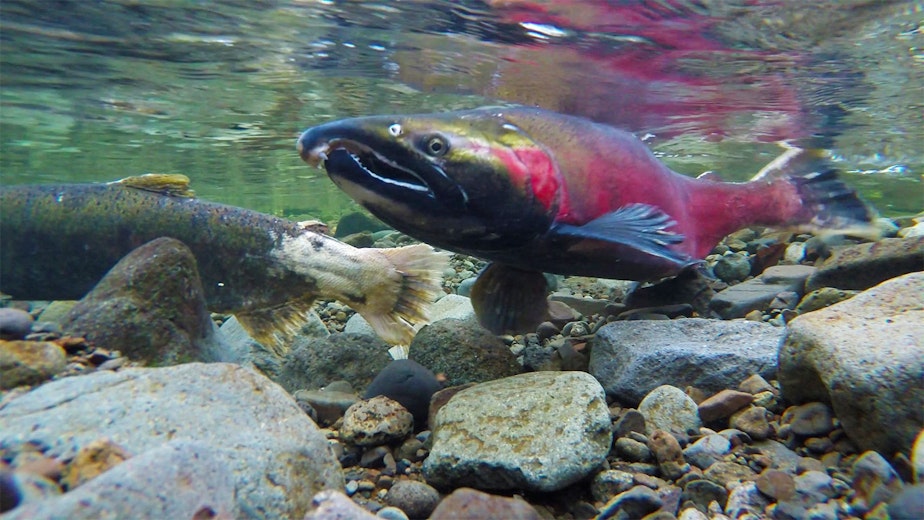One way to help coho salmon survive NW pollution

There is an air filter for your car, a filter for your tap water, and air filters for our smoky Northwest air. Now, there could be a filter to help the region's struggling salmon.
According to a new study from Washington State University, using simple biofilters on stormwater runoff can dramatically increase the survival rate of newly hatched coho salmon.
“This study highlights how vulnerable the fish are as soon as they hatch to the toxic impacts of stormwater runoff,” said lead author and associate WSU professor Jen McIntyre. “Biofiltration appears to be very effective at preventing that acute lethal toxicity. We also found that it prevented some of the sub-lethal effects, but not all of them.”
RELATED: Seattle salmon has a huge bite out of his head. Will it reach its home stream?
The effects of chemical-carrying stormwater runoff from roads, and other places, into streams and rivers has recently received a lot of attention. After years of searching for the cause of so many salmon deaths, researchers discovered in 2020 that a tire stabilizer (6PPD) breaks down into a toxic substance. As tires wear down on the road, their rubber, and all the chemicals they carry, wash into local bodies of water where fish and wildlife encounter them.
Sponsored
RELATED: Tribes call for national ban on salmon-killing chemical in car tires
WSU research also helped pinpoint the fish-killing culprit. The information prompted congressional hearings. The tire industry has been ordered to find safe alternatives to these chemicals. Tribes have petitioned for a national ban on the use of such chemicals.
In the meantime, mitigation methods, such as those in the recent WSU study, could help improve environmental conditions. The study put contaminated stormwater through natural biofilters — a combination of mulch, compost, sand, and gravel.
Researchers exposed coho eggs to water taken from 15 Seattle-area storm drains, which contained metals and fossil fuel chemicals that often wash off our roads. While the eggs, which are protected by a shell, survived, once the coho hatchlings encountered the contaminants, nearly all of them died.
Professor McIntyre notes that this could explain why coho have disappeared from some waterways in the Northwest.
Sponsored
Hatchlings exposed to the filtered storm water survived, however, they had smaller eyes and bodies compared to fish who were in clean water.
Researchers say that installing these simple biofilters is only part of the solution. They are inexpensive, but they require a considerable portion of land to work. The best way to help salmon is to keep the chemicals out of the water to begin with.
KUOW's Dyer Oxley contributed to this blog post.




